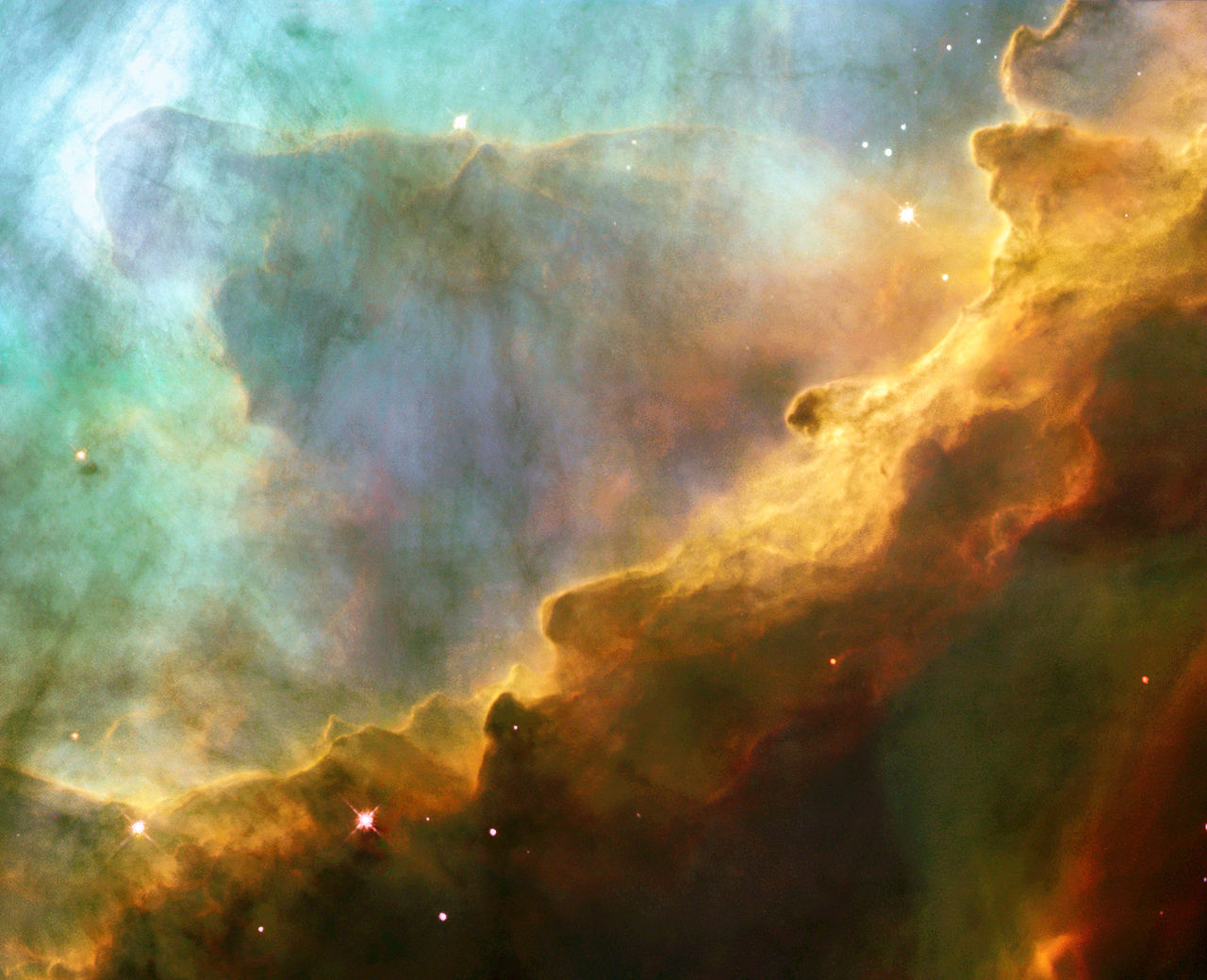Evolution

All of these chemical and biochemical reactions can be done in various laboratories to various degrees. Astronomers have observed regions where stars are forming, proto-stars, such as the image at the top of the pages here. Ancients had observed supernova explosions.
In a classic experiment in 1952, Stanley Miller and Harold Urey put simple molecules like water, ammonia and carbon dioxide that would be found in a pre-biotic (before life) atmosphere in a flask and added energy such as heat, ultraviolet light or electricity and found amino acids - the components of proteins.
Snipets of DNA from one organism put into another, creates a different organism with different characteristics - genetic engineering. We have genetic modified organisms (GMO) today. In early biologic history, a small organism merged into the cell membrane of another organism an became an organelle in a new, bigger system. For example, mitochrondria, energy transforming parts of cells, were once independent bacteria. Living systems do evolve and mutate as can be seen with viruses, bacteria and fruit flies in hospitals and school laboratories. Evolution is a fact. The question of whether living organisms, life itself, and man, have evolved from basic building blocks has not been answered.
James Lovelock, of Gaia Theory, wrote that “the universe has properties that make the emergence of life and Gaia inevitable. But I react to the assertion that is was created with purpose. It might have been; but how the the Universe and life began are ineffable questions.” Ineffable: incapable of being expressed or described in words, not to be spoken because of its sacredness.
As evolution of life continues, the next step would be an organism with higher states of consciousness, with more awareness of the Spirit and of what we call the Divine.
Earlier we considered strings as the tiniest particles or bits of energy that everything else is made of. They can vibrate at different frequencies and make-up different sub-atomic particles. And if this is correct, then we and our world are made of vibrating energy and this may indeed be connected to the ancient philosophers’ Music of the Spheres and the spiritual realm that we are considering.
| Vibrating string showing the many frequencies, or harmonics of that length of string. Now consider the string in 3 or more dimensions as the mathematicians can do. |  |
|---|
What is the nature of substance? This was a question asked in all ages. Monad comes from the Greek meaning one or a single entity. It has many different meanings in philosophy, mathematics and biology. Its use appeared with the early Greeks and the Pythagoreans. The monad begat the dyad, the other numbers, points, lines, two-dimensional objects (square), three dimensional objects (cube), the elements and the objects of the world.
 |
The Monad Ancient symbol of God. The circle is perfect and divine, wholeness. |
|---|---|
 |
Enso |
 |
Drawing by Antonie van Leeuwenhoek, Dutch scientist and lens maker, of animal spermatozoa seen in seminal fluid under his microscope about 1677. |
Leibnitz, a German mathematician and philosopher, around 1670 A.D., reintroduced the term monad. He was influenced by the microscopic world of Leeuwenhock after seeing tiny single celled protozoan swimming in pond water and spermatozoa moving in seminal fluid. Interestingly, Leibnitz also developed a form of calculus based on smaller and smaller divisions called infinitesimals. Leibnitz wrote that substances are composed of minute particles (monads) that are part material and part immaterial, and that monads have the essence or “soul” of the object they make up. These monads that various philosophers through the ages have had “inituitions” about, may be what the physicists are calling quarks and strings. Monism is a philosophy, or idea, that all is a unified whole and that objects seem separate but are actually part of the whole. That question mark at the beginning in the above scheme is outside of the realm of science, but maybe the monad.
The Next Reformation will fill in some missing links and understand Evolution and what comes next.


